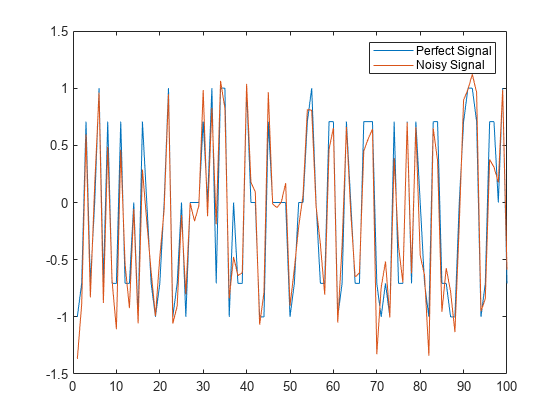convertSNR
Syntax
Description
y = convertSNR(x,inputmode,outputmode)x to the ratio specified
by outputmode. For more information, see Algorithms.
y = convertSNR(x,inputmode,Name=Value)
Examples
Input Arguments
Name-Value Arguments
Output Arguments
Algorithms
This table shows the valid input to output mode conversions.
inputmode to
outputmode | Conversion |
|---|---|
"ebno" to "snr" | SNR = Eb / N0 + 10log10((Nbps×R) / Nsps) |
"snr" to "ebno" | Eb / N0 = SNR – 10log10((Nbps×R) / Nsps) |
"ebno" to "esno" | Es / N0 = Eb / N0 + 10log10(Nbps×R) |
"esno" to "ebno" | Eb / N0 = Es / N0 – 10log10(Nbps×R) |
"esno" to "snr" | SNR = Es / N0 – 10log10(Nsps) |
"snr" to "esno" | Es / N0 = SNR + 10log10(Nsps) |
"snrsc" to "snr" | SNR = SNRSC + 10log10(NSC / FFTLen) |
"snr" to "snrsc" | SNRSC = SNR – 10log10(NSC / FFTLen) |
Where
Nbps is the
BitsPerSymbolvalue.Nsps is the
SamplesPerSymbolvalue.R is the
CodingRatevalue.FFTLen is the
FFTLengthvalue.NSC is the
NumActiveSubcarriersvalue.Eb / N0 is the
xvalue input oryvalue output when you setinputmodeoroutputmode, respectively, to"ebno".Es / N0 is the
xvalue input oryvalue output when you setinputmodeoroutputmode, respectively, to"esno".SNR is the
xvalue input oryvalue output when you setinputmodeoroutputmode, respectively, to"snr".SNRSC is the
xvalue input oryvalue output when you setinputmodeoroutputmode, respectively, to"snrsc".

